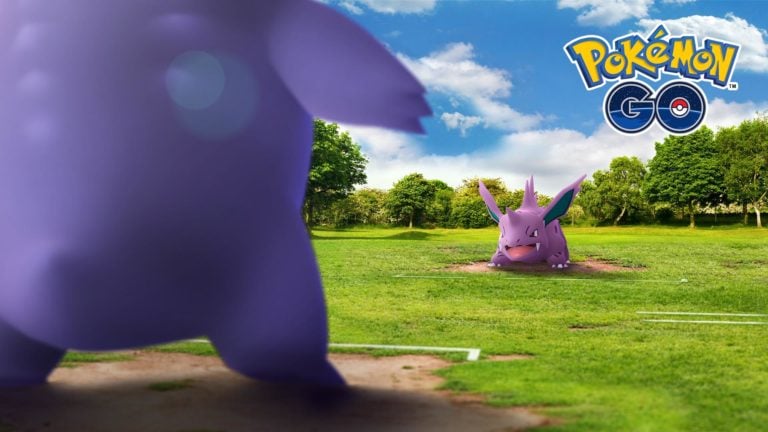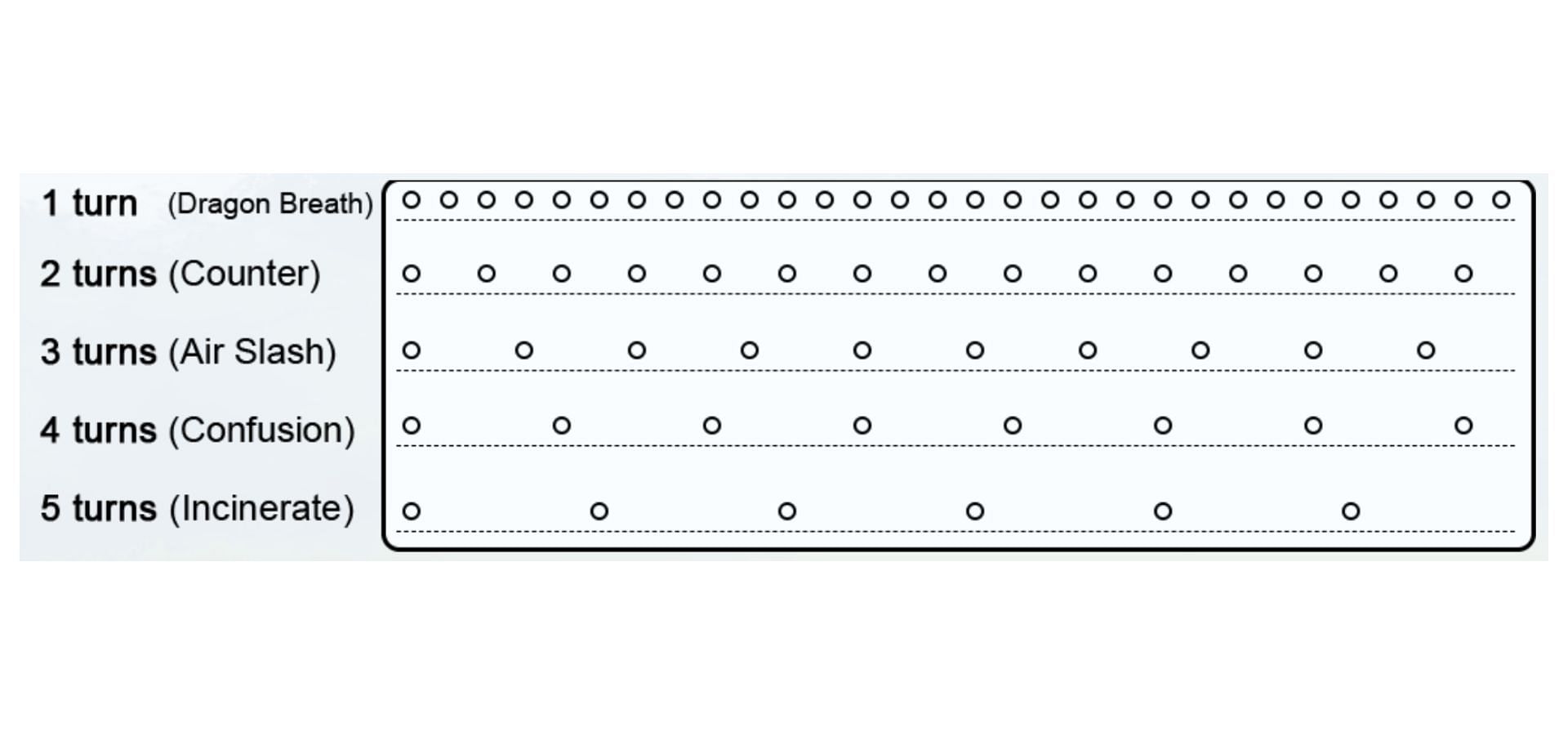Mastering the Turn System in Pokémon GO Battle League is key to ascending the ranks and becoming an unstoppable force in the competitive arena. In this article, we’ll explore the basics and advanced fundamentals of the turn system and provide tips on how to improve your skills to become a formidable Pokémon GO Battle League contender.
Believe it or not, Pokémon GO PvP is a turn-based system. Now, before you come at me with a pitchfork arguing against this case, hear me out. Unlike other conventional turn-based games where one player will select their attack on a screen, wait for the attack to display, and then your opponent can choose their counterattack afterward, Pokémon GO PvP is a unique live-action-based format.
The concept revolves around the idea that different fast moves have varying durations, ranging from 1 to 5 turns. This numerical representation signifies the number of intervals or instances within a single turn that a particular fast move can be executed.
Each Pokémon has a Fast Move and a Charged Move, and the turn system dictates when these moves can be used. A fast-paced and strategic understanding of turns can give battlers a significant advantage.
What are Fast & Charged Moves?
Fast Moves:
- Fast Moves generate energy and contribute to the Charged Move gauge.
- Different Pokémon have different fast move durations, influencing the number of fast moves performed in a turn.
Charged Moves:
- Charged Moves consume energy built up from Fast Moves.
- The turn system determines when a Charged Move is executed based on the energy accumulated.
I’m sure by now, most of you reading this understand the Fast/Charge move mechanics and how they both complement one another. There are several steps you can take in order to use this information to your advantage, which brings me to the section.
Turn Durations Explained
The primary distinction among fast moves lies in their duration, typically categorized into 1-5 turn fast moves. The number assigned to each move represents the intervals within a single turn during which the move can be executed. Here’s a breakdown of the differences between 1-5 turn fast moves.
1-Turn Fast Moves:
1-turn fast moves take the shortest duration to execute (exactly 0.5 seconds per attack). This is the baseline for turn durations. The continuous and fast-paced nature of these moves can exert constant pressure on opponents. The biggest benefit of 1-turn moves is that you can always time these moves so that your opponent does not sneak in any moves if you time correctly (unless your opponent is also using a Pokémon with a 1-turn move). Some notable 1-turn fast moves are Dragon Breath, Water Gun & Lick
2-Turn Fast Moves:
These moves have a slightly longer duration, allowing for fewer executions within a turn compared to 1-turn moves. However, the higher the turn duration, the bigger the damage is. Some of the strongest moves in the game such as Counter & Shadow Claw are both 2-turn moves. What makes these moves so strong is the DPS (Damage Per Second) combined with their EPT (Energy Per Turn).
3-Turn Fast Moves:
Pokémon with 3-turn fast moves often require more thoughtful timing and prediction in battles, as there is a slight delay between moves. While not as quick as 1 and 2-turn moves, they still allow Pokémon to accumulate energy efficiently for charged moves. Bubble, Snarl & Charm are among some of the more popular 3-turn fast moves.
4-Turn Fast Moves:
With an increased duration, 4-turn fast moves offer fewer opportunities for execution within a turn, however, this does not mean that they are a worse alternative to shorter-duration moves. The pacing of battles becomes more deliberate with 4-turn fast moves, and trainers need to anticipate opponent moves for effective strategy. Volt Switch & Confusion are currently the only real 2 meta-orientated fast moves.
5-Turn Fast Moves:
These moves have the longest duration among fast moves, allowing for the fewest executions within a turn. Pokémon with 5-turn fast moves demand precise timing in battles. Trainers must carefully manage energy and predict opponent actions. Some of the biggest downfalls to using… well, the only 5-turn fast move in the game currently, Incinerate, is that it can feel clunky and that you feel stuck in the turn duration unable to perform any executions such as using the switch tab or performing a charge move since it takes 2.5 seconds to perform.
Incinerate received a major buff to its overall damage for the Season 16 moveset update which means that Fire types such as Talonflame & Skeledirge have gained a substantial amount of popularity, and for good reason.
Improving Your Turn Management
Study Pokémon Move Sets:
- Familiarize yourself with the Fast and Charged Moves of popular Pokémon in the meta.
- Understand the energy requirements for each Charged Move to plan your strategy effectively.
Count Fast Moves:
- Pay attention to the number of Fast Moves your opponent performs before using a Charged Move.
- Counting Fast Moves can help predict when your opponent will launch their Charged Move, allowing you to make informed decisions.
Practice Switch Timing:
- Switching Pokémon at the right time can disrupt your opponent’s strategy.
- Use switches strategically to gain a type advantage or to absorb a powerful Charged Move with a tanky Pokémon.
Utilize Fast Move Denial:
- Some Charged Moves can deny your opponent’s Fast Moves, disrupting their energy generation.
- Experiment with Pokémon that have access to such moves to control the pace of the battle.
Adapt to the Meta:
- Stay informed about the current meta and adjust your team composition accordingly.
- Be ready to adapt your strategy based on the popular Pokémon and strategies in the Battle League.
Fast Move Timing
Ideally, you should execute your fast move immediately after your opponent has completed theirs. This minimizes the window for them to squeeze in an additional move. Using this graph from pvpoke.com, we can see the difference in fast-move durations.
The best time to throw your charge move should always be 1-turn before their move finishes. For example, a 1-turn fast move against a 5-turn fast move, you should throw on the fourth turn for maximum energy management and efficiency. However, when it comes to higher turn moves such as 2-turn vs 3-turn, there is a mathematical formula for success that involves throwing after 1, 4, 7, or 10 fast moves so that your opponent never has an opportunity to sneak in any unwanted fast moves which can be detrimental.
If this all sounds a bit too confusing, fear not. With practice, it becomes rhythm. What I mean by this is that some of the more advanced players can time their moves to perfection without even counting in their head, they go off the rhythm of the game to throw their moves correctly, it will take time and practice but becomes more and more proficient over time.
Parting Words
The turn system in Pokémon GO Battle League is a continuous learning process that requires observation, practice, and adaptation. By understanding the mechanics of the turn system, counting Fast Moves, and strategically managing your moves, you can elevate your PvP skills and climb the ranks in the Battle League. Keep evolving your strategies, stay informed about the meta, and most importantly, have fun battling!




